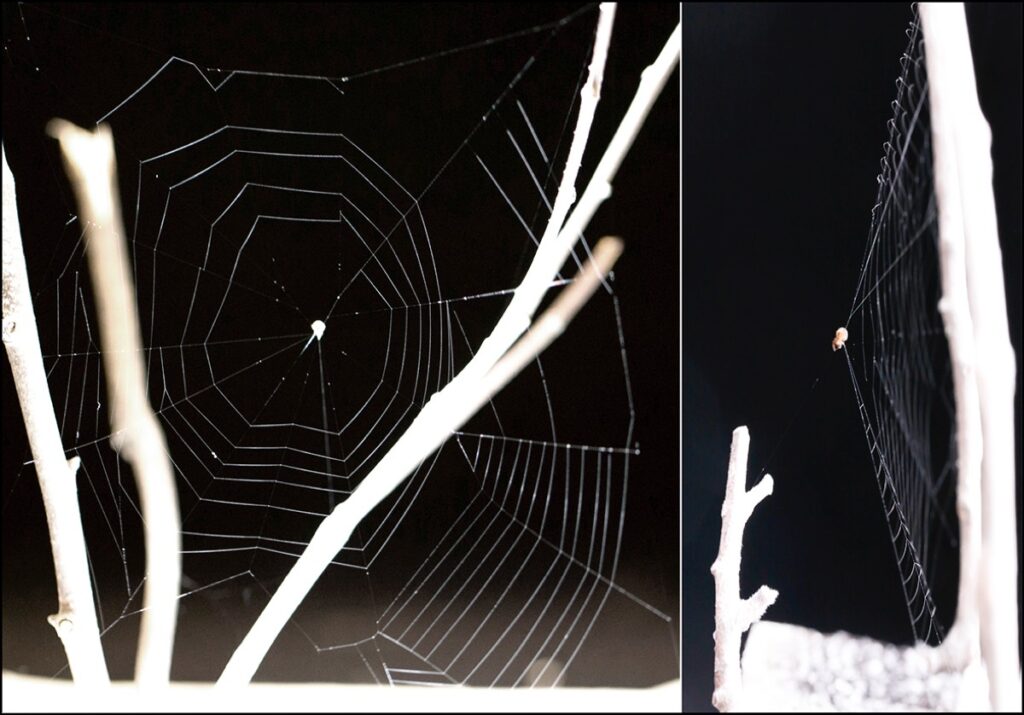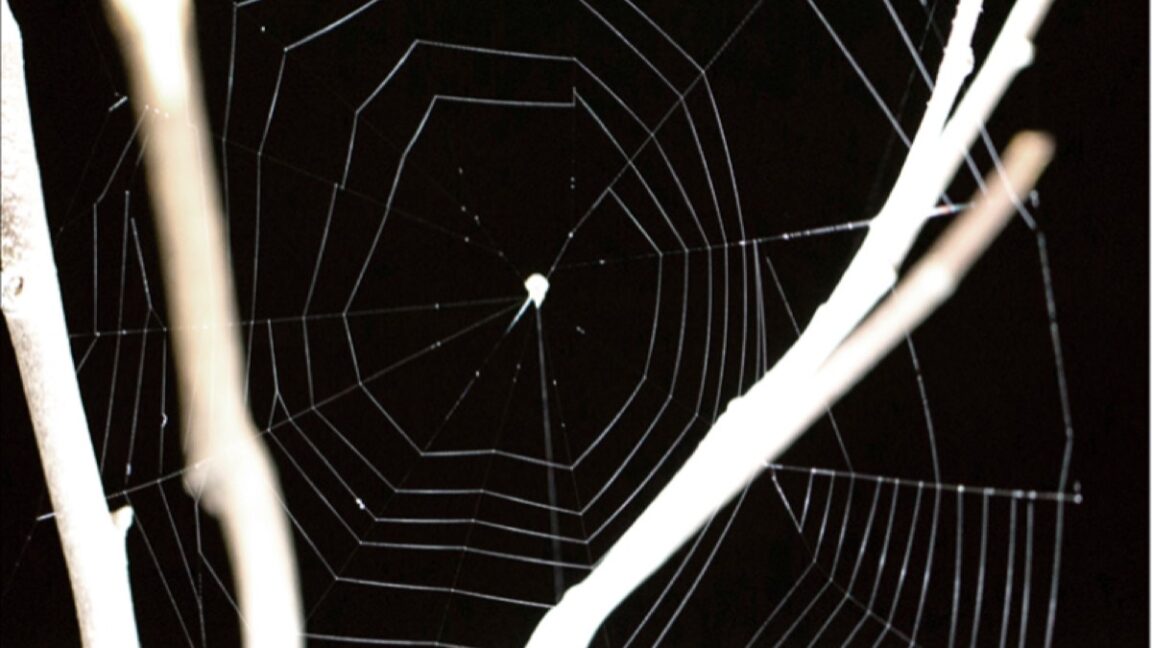Ballistic webs can reach speeds of nearly 1 m/s to catch mosquitoes within 38 milliseconds.
Ray spiders deploy an unusual strategy to capture prey in their webs. They essentially pull it back into a cone shape and release it when prey approaches, trapping said prey in the sticky silken threads. A few years ago, scientists noticed that they could get the spiders to release their webs just by snapping their fingers nearby, suggesting that the spiders relied at least in part on sound vibrations to know when to strike. Evidence for that hypothesis has now been confirmed in a new paper published in the Journal of Experimental Biology.
Most spider orb webs are static: the spiders weave them and fix them in place and then wait for prey to fly into the webs. That causes the silk threads to vibrate, alerting the spider that dinner is served. There are some species that actively actuate their webs, however, per the authors.
For instance, the triangle weaver spring-loads its triangular web once an insect has made contact so that the threads wrap around the prey in fractions of a second. Bolas spiders seem to detect prey in their vicinity through auditory cues, throwing a line of silk with a sticky end at passing moths to catch them. Ogre-faced spiders also seem to be able to hear potential prey, striking backward with a small silk net held in their front legs. It's a more proactive hunting strategy than merely waiting for prey to fly into a web.
Sarah Han and Todd Blackledge of the University of Akron in Ohio were intrigued by the 2021 observations of ray spiders (Theridiosoma gemmosum) and decided to test the spiders' reactions to sound in the lab, as well as measuring the kinematics of web release. They collected 19 local spiders in the wild and placed each in small inverted terrariums with trays of shallow water underneath to mimic their natural habitat, along with twigs mounted on styrofoam bases to serve as frames for web-building. These included extra small twigs to anchor the tension lines that ray spiders use at the center of their webs to draw it back into a cone like a slingshot.
Along came a spider

The 19 spiders built 26 webs over the testing period. For the experiments, Han and Blackledge used a weighted tuning fork with frequencies in the mid-range for whirring wings for many mosquito species in North America as a control stimulus. They also attached actual mosquitos to thin strips of black construction paper by dabbing a bit of superglue on their abdomens or hind legs. This ensured the mosquitos could still beat their wings when approaching the webs. The experiments were recorded on high-speed video for analysis.
As expected, spiders released their webs when flapping mosquitoes drew near, but the video footage showed that the releases occurred before the mosquitoes ever touched the web. The spiders released their webs just as frequently when the tuning fork was brandished nearby. It wasn't likely that they were relying on visual cues because the spiders were centered at the vertex of the web and anchor line, facing away from the cone. Ray spiders also don't have well-developed eyes. And one spider did not respond to a motionless mosquito held within the capture cone but released its web only when the insect started flapping its wings.
"The decision to release a web is therefore likely based upon vibrational information," the authors concluded, noting that ray spiders have sound-sensitive hairs on their back legs that could be detecting air currents or sound waves since those legs are typically closest to the cone. Static webs are known to vibrate in response to airborne sounds, so it seems likely that ray spiders can figure out an insect's approach, its size, or maybe even its behavior before the prey ever makes contact with the web.
As for the web kinematics, Han and Blackledge determined that they can accelerate up to 504 m/s2, reaching speeds as high as 1 m/s, and hence can catch mosquitos in 38 milliseconds or less. Even the speediest mosquitoes might struggle to outrun that.
Journal of Experimental Biology, 2024. DOI: 10.1242/jeb.249237 (About DOIs).
Hope you enjoyed this news post.
Thank you for appreciating my time and effort posting news every day for many years.
2023: Over 5,800 news posts | 2024 (till end of November): 5,298 news posts
RIP Matrix | Farewell my friend ![]()



3175x175(CURRENT).thumb.jpg.b05acc060982b36f5891ba728e6d953c.jpg)
Recommended Comments
There are no comments to display.
Join the conversation
You can post now and register later. If you have an account, sign in now to post with your account.
Note: Your post will require moderator approval before it will be visible.